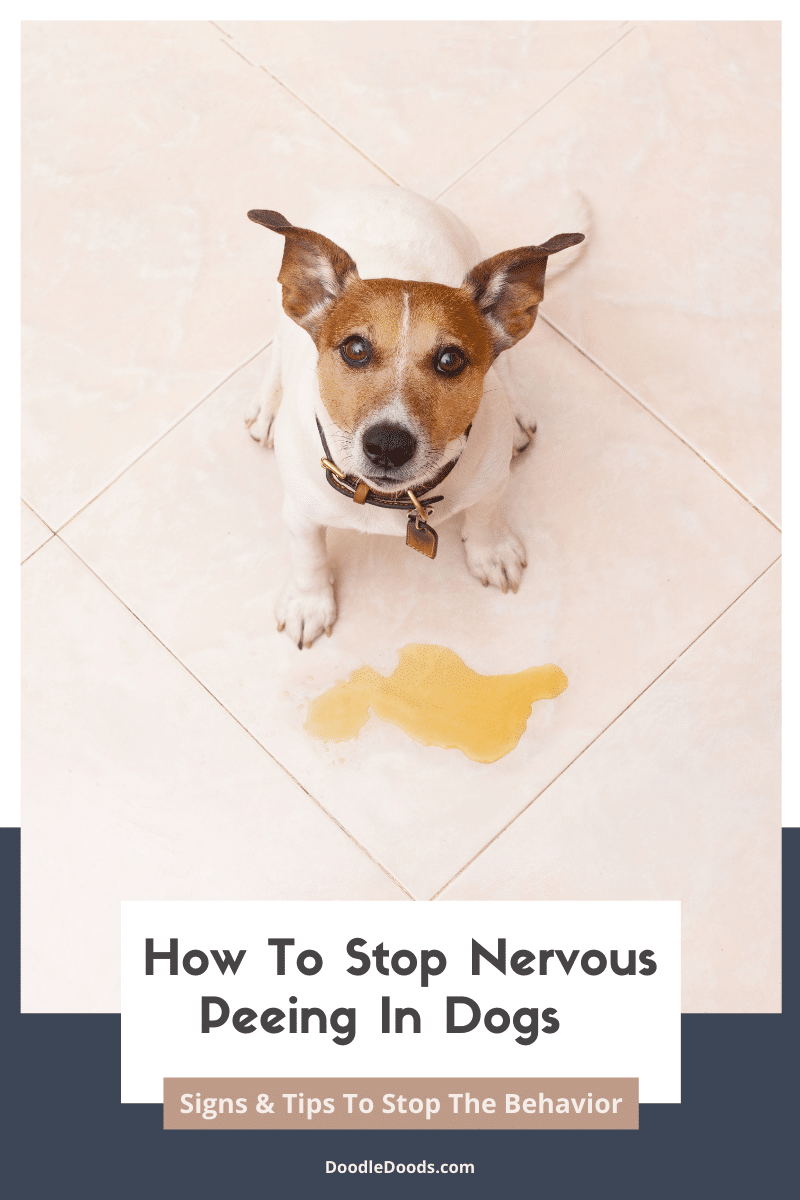For some of us, the idea of mixing a Labradoodle and cats in one household might seem like a scary thought at first. Whether you already have a few feline besties at home and are planning to adopt a Labradoodle, or vice versa, it’s only natural that you’d like to be fully prepared to ensure that your pets can all get along and enjoy their lives by your and each other’s side.
In this article, we’re going to discuss whether or not having both Labradoodles and cats in one household is a good idea. Are Labradoodles good with cats? Do Labradoodles get along with cats? And how to introduce a Labradoodle to a cat to ensure a safe and harmonious living for all of you involved? We’ll answer all of these questions and share with you some of our best tips in the following guide. Let’s get started!
Table of Contents
- Labradoodle And Cats: Introduction
- Are Labradoodles Good With Cats?
- How Do You Introduce A Labradoodle To A Cat? (7 Practical Tips!)
- Pros And Cons Of Having A Labradoodle And A Cat Under One Roof
- Labradoodle And Cats: FAQs
Labradoodle And Cats: Introduction
If you don’t discriminate and love both Labradoodles and cats, perhaps even thinking about having both of these adorable pets in your family, the next obvious question will be – do Labradoodles get along with cats? Should you be worried about having a Labradoodle and cats in your household? Will everything work out just fine or is it going to be more difficult than you’d hope..?
The good thing is that Labradoodles are notoriously sweet, fun-loving, and affectionate dogs. They make excellent family companions, they’re intelligent, and gentle with everyone they meet. They also come in three different sizes, ranging from the smallest 15 pound Mini Labradoodle to the largest 90 pound Standard Labradoodle, giving you plenty of options to choose just the right kind of Dood for your family.
What could go wrong, right?! Well, most of the time, if you take the right measures, you should have no issues having both a Labradoodle and a cat (or why not cats) in your family. However, introducing your pets to each other and getting them comfortable enough around each other can take some time.
Are Labradoodles Good With Cats?
Most of the time, if the right measures have been taken, Labradoodles can be excellent with cats. And it’s the same the other way around – your lil’ kitten might absolutely adore their big Labradoodle buddy as soon as they meet. Or, it could take a bit more time initially for them to get properly acquainted.
But we’re not going to lie, there’s no one-size-fits-all approach to this topic. All dogs and cats are different. They have different personalities and have also been through different experiences in their lives. Your Labradoodle and cat may immediately become inseparable best friends. Or, they may need a few days, weeks, or even a couple of months to fully warm up to each other. Whatever the case, it all boils down to how you prepare your pets for the transition and how you ultimately arrange their home life once the other pet arrives home.
After all, cats and dogs are animals and you can’t exactly rationalize it to your pets like look, we have a new pet arriving soon and you play nice. To be fair, even toddlers and slightly older children often need time to adjust to a newborn baby being welcomed into their home.
Another thing to remember is that usually dogs and cats have an easier time being around each other when they’ve been exposed to them from a young age. Also, the more they’re exposed to each other, the easier it will be for them to adjust. For example, if your Labradoodle only sees a cat when walking outside, they may have a harder time behaving well. In contrast, when living with a cat, they essentially get desensitized to the presence of a feline pal and will also react much less when encountering any other cat when out and about.
What About Prey Drive..?
Like with many other dogs, some Labradoodles may have a higher prey drive. And this usually kicks in when seeing a smaller animal, such as a cat. So, you’ve also got to be wary of your Labradoodle trying to chase down your cat due to their prey drive. In the worst case scenario, their urge to kill may also pose an issue…
Fortunately, most Labradoodles are quite good at dimming down their prey drive around cats, squirrels, and even cars. Based on our survey results, most people evaluated their Labradoodles to have acceptable reactions towards cats and other small ‘prey’. But again, it all comes down to your Labradoodle’s upbringing, including how well they’ve been socialized, desensitized, and trained on a consistent basis from a young age.
You should start socializing your Labradoodle puppy to people of all ages, including children and elderly, as well as other dogs and also cats as soon as possible. This helps them learn how to appropriately behave and interact with others they might encounter. Desensitization and counterconditioning techniques will also be super helpful when teaching your dog how to NOT chase their supposed prey.
Consider The Age Of Your Labradoodle And Cats
If you know a little bit about Labradoodles and cats, you know that these Doods can be super playful. Meanwhile, some cats are quite laid-back and prefer to do things on their own terms. Now, if your Labradoodle pup is still young and hasn’t matured enough yet, they can be rather annoying for a more relaxed adult or senior cat. On the other hand, it’s often easier for a young puppy to learn how to interact with a cat without any troubles. The earlier you start, the better.
That’s not to say that cats are never playful or affectionate. They definitely are! However, some cats are prone to anxiety and stress, making any new changes in their family and household harder to navigate around.
In addition to that, both a Labradoodle and a cat can be quite territorial, especially if one of them has been the only pet in your family for an extended period of time. Fortunately, all of these issues can be successfully managed if you do it the right way.
How Do You Introduce A Labradoodle To A Cat? (7 Practical Tips!)
Once you’ve decided to adopt a Labradoodle and a cat, or bring home an additional pet into your household, there are certain steps you should take. The main thing is that the transition is smooth and comfortable for all of your pets involved. They may need some time to warm up to each other, but it’s completely normal. Below you’ll find the exact steps to take when introducing a Labradoodle and a cat for the very first time so that your pets and you will enjoy a nice and loving home environment for many years to come.
Keep Them Apart At First
Before putting your Labradoodle and cat face to face, you should actually keep them apart for a little while. If you have multiple rooms in your home, keep your Labradoodle and cats in separate rooms initially. The goal is to keep their stress levels at a minimum so that they don’t freak out when suddenly a new animal is placed in front of them.
If one of your pets has been living with you for a longer period of time, it’s only natural that they feel more territorial in their space. So don’t force your existing pet to come into contact with your new pet immediately. Similarly, when bringing home a new pup or puss, it’s very likely they feel a bit confused and timid at first. Give them some time and space to adjust and don’t stimulate them too much with new experiences, people, or pets on the first day.
Start With Introducing Scents
One of the best tips for introducing your Labradoodle and cat is to start with scents. Cats and dogs have very sensitive noses and a scent of another animal is already a huge indicator for them that something’s going on.
For the first few days, keep your Labradoodle and cats in separate rooms, but let them move around the house without meeting so that both of their scents get to spread around. Obviously, if you already have an existing pet, theirs will already be firmly imprinted pretty much everywhere. So, let your new pet roam around and get used to the smell of the other pet.
If you’re bringing home a new pet, you can rub a blanket or a towel against them and then place the blanket somewhere near your existing pet. This way, your existing pet can also get used to the scent of your new pet. Once they meet, it’s as if they already know a little bit about each other!
Keep Their Safe Spaces And Mealtimes Separate
Mealtimes are a sacred time for both dogs and cats, especially if they don’t know each other just yet. At first, you want to feed your Labradoodle and cat at separate times and also in separate places. Having too much stimulation in terms of scents and another pet nearby may make them fearful and anxious in the beginning.
In fact, it’s not uncommon for both cats and dogs to experience food aggression. To prevent this, it’s best to avoid feeding your Labradoodle and cat at the same time and in the same place in the beginning. PS! Always make sure that both of your pets have access to clean drinking water at all times.
After a day or two, you can actually start feeding your Labradoodle and cat on the opposite sides of a closed door. This way, they can smell each other and hear each other and get used to one another. And since there’s food involved – something which both cats and dogs are often highly motivated for – it can also help enforce positive associations.
Another thing you should be mindful of is to provide both your Labradoodle and cats their separate safe spaces. For a dog, it could be a comfortable crate with some plush toys and comfy bedding. For your cat, it could be a separate room with a nice soft cat bed and some toys. Whenever they need some alone time to relax and recharge, this will be the safe haven for them to do so.
Supervise Their Interactions
Once your Labradoodle and cat are ready to meet, you should only bring them face to face in a neutral space in your home. Keep a close eye on their interactions and don’t force either of them to stay in the room if they’re visibly uncomfortable or upset. As it’s often the case, a Labradoodle might be more excited to meet the cat, whereas your cat may be more careful at first. If your cat wants to retreat and escape, let them. However, it’s vital that you don’t let your Labradoodle chase them.
On that note, you shouldn’t also exactly restrain either of them when they meet for the first time. Let them calmly sniff and inspect one another. If your pup is particularly excitable, having them leashed could be helpful. They might not feel too comfortable around each other from the get go. So, if necessary, keep those first few meetings short and sweet, but make sure to consistently bring them together every day.
Oftentimes, Labradoodles have a bit harder time containing and restraining themselves. So before your pup has properly learned how to calmly approach your cat, you should always supervise their interactions to prevent any unfortunate accidents due to fear or aggression. In some cases, this could take several months, so be prepared for that.
Additionally, small kittens are extremely tiny and fragile and even a tiny Labradoodle puppy could severely injure them (or worse) during play. Safety comes first!
Give Equal Attention To Both Your Labradoodle And Cats
Whether you have a cat at home and are planning to adopt a Labradoodle, or the other way around, it’s so important that you continue to dote on your existing pet as much as you used to. Unfortunately, the existing pet often gets less attention and affection than they did before the new pet arrived. As a result, your existing pet may get severely anxious, stressed, or depressed. For instance, when cats get depressed, they may stop eating altogether, which can have fatal consequences. Your main priority would be to prevent this as much as possible.
Cats are often at a higher risk of being emotionally neglected due to the common misconception that they’re extremely independent and don’t rely on human interactions. This couldn’t be farther from the truth. Yes, they don’t need as much training or even exercising outdoors, but they’re still living beings who thrive on human companionship.
Understandably, when you bring home a new Labradoodle, you’ll have to start training and socializing them, make time for daily exercise and playtime, and so forth. But try to spend equally as much time with your cat as well so that they don’t feel left out or ignored.
Of course, you should properly think through if you can handle two or more pets in your household. Remember that all of them will require equal amounts of attention and care from you, without any of them having to feel neglected. Are you up for that? Do you have the time, energy, and mental capacity for taking care of more than one pet?
Reward Their Interactions With Positive Reinforcement
Whenever we’re talking about dogs, the key to raising a well-behaved and well-rounded dog lies in positive reinforcement. As soon as you bring your new pooch home, you should start teaching them basic manners and obedience. Verbal cues like “sit”, “stay”, “leave it”, “no” or “stop” will be helpful in so many different situations, but also when introducing your Labradoodle to cats. You should also teach your pup not to jump up on anyone they meet, including your cat. That’s just bad manners!
We also recommend you reward calm and positive interactions with plenty of praise and healthy treats. As we mentioned earlier, dogs are very food motivated and they’ll soon learn to associate calm interactions with something positive like tasty treats. Needless to say, it’s your responsibility to stay consistent in your training methods. Whenever your dog is doing something inappropriate when meeting the cat, interrupt them or divert their attention. By no means should you reward unwanted behaviors with attention, even negative attention. Even if just one time you find your Labradoodle chasing your cat amusing, it could have dire, lasting effects.
Speaking of which, you should never yell at or punish your pets for doing something wrong. Both of them are still learning, trying to understand the appropriate behaviors and the boundaries that you’ve set. So, if there are some setbacks, maybe take a few steps back and give them more time to adjust.
Hire A Professional Trainer
If you feel like you’re a bit stuck when trying to introduce your Labradoodle and cat to one another, then we recommend you reach out to a professional dog trainer or consult with your veterinarian.
Another option is to look into online programs, such as the Online Puppy School by Baxter & Bella. It’s an excellent program for all dog owners, regardless if you have a young puppy or a more mature pooch. They have so many resources on various training techniques, behavioral problems, and topics like potty training or leash walking, to name a few. This program is recommended by veterinarians, ethical dog breeders, and other dog professionals, and we’ve found this to be an invaluable program with our own pets, too.
Pros And Cons Of Having A Labradoodle And A Cat Under One Roof
As lovers of all animals, we’re a bit biased here and find that there are more pros of having a Labradoodle and cats under one roof than cons. On the other hand, there are certainly a few important topics you should think through before making any hasty decisions. Adopting a pet, whether it’s a dog or a cat, is always a huge responsibility and should never be taken lightly. If you’re about to adopt a pet or multiple pets, it’s now up to you to take good care of these precious little beings and provide them with the best lives as humanly possible.
Pros Of Having A Labradoodle And A Cat:
- You’ll have double or triple the cuteness to enjoy with all of your pets! There’s nothing quite like the joy of having those furry bundles of joy around.
- Your Labradoodle and cats will keep each other company when you’re at the office, running errands, or visiting someone.
- Your Labradoodle and cats will learn how to socialize and interact with each other in a safe and healthy manner. As a result, they’ll also have an easier time encountering any other cats and dogs outside of the house.
- You and your other family members will learn more responsibility, but also how to be more patient and forgiving.
- Research has shown that spending time with your beloved pets is an excellent stress relief, as it reduces the major stress hormone called cortisol. (Source)
Cons Of Having A Labradoodle And Cats:
- More responsibility of taking care of more than one pet. You’ll have to ensure that your Labradoodle and cat both get equal amounts of attention and affection. Additionally, having multiple pets in your family will also be more expensive financially due to vet bills, different pet insurance plans, dog and cat food, and so forth.
- It may take a considerable amount of time for your Labradoodle and cats to get comfortable around each other so that you won’t have to supervise every one of their interactions.
- One of your existing pets may get very stressed out and anxious when adding a new pet into the household. You might have to keep them separate for an extended period of time at first.
- You might need more space at home to comfortably accommodate both of your pets.
Labradoodle And Cats: FAQs
Goldendoodles and Labradoodles are said to be one of the best Poodle mixes to get along well with cats. But, of course, it all depends on your Dood’s unique temperament, personality, and how well they’ve been socialized with cats. You might also want to consider looking into Doodle breeds that come from low prey drive purebreds, such as Havapoos, Maltipoos, Pugapoos, and Pomapoos.
While all different options could work out fine for your household, some people do recommend adopting a calmer dog first and then bringing home a kitten or an adult cat. Another option would be to adopt a kitten and a puppy at the same time, or two adults at the same time. Cats may start getting more stressed out when they’re already adults, even seniors, and you adopt a younger puppy. The difference between their energy levels as well as your cat being used to being the only pet for many years may make the transition a bit trickier initially.
We wouldn’t say happy per se, but your cat might be completely fine with you expanding the family with a dog. On the other hand, they may need a considerable amount of time to adjust to this change in their home life. It depends on your cat’s personality, but also their age and how much they’ve been exposed to dogs in the past and whether or not those experiences have been positive. If you get a cat and a dog at the same time, it might be easier for them to become best buddies. However, issues may start to arise, at least at first, when you have a more mature cat and bring home an overly rambunctious puppy that can’t seem to calm down at all.
Labradoodle And Cats: Final Thoughts
Labradoodles and cats can definitely get along perfectly well under one roof, but it can take some time and effort on your part to make the transition as easy and smooth as possible. The key takeaway is to introduce your Labradoodle to your cats gradually and over time, without putting any excessive pressure on any of your pets. We hope the tips we shared with you in this guide have been helpful so that you, your Labradoodle, and cats can all enjoy a harmonious, cuddle-filled life together at home.
Learn How to Care for Your Doodle Puppy!

Perfect for first-time Doodle parents, get ALL your questions answered, including questions new Doodle parents don’t even think to ask.
Plus, get $700 worth of Bonus Materials for FREE, including:- Doodle Parenthood Community and Support Group ($190 value)
- Doodle Puppy Growth Tracker ($20 value)
- EMERGENCY Cheatsheet: When To Call The Vet Immediately ($50 value)
- HELP! Button ($145 value)
- And SO MUCH MORE!









